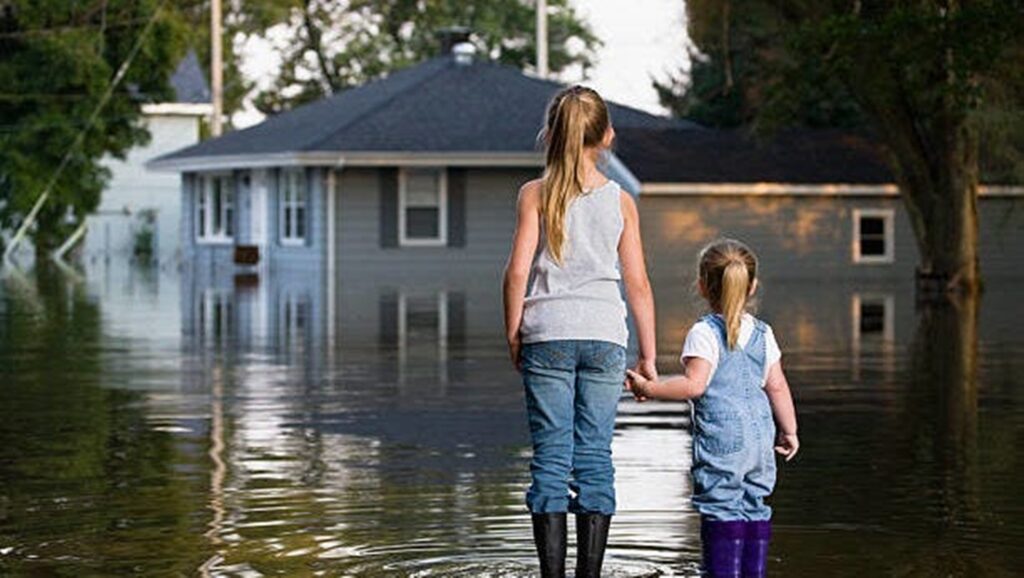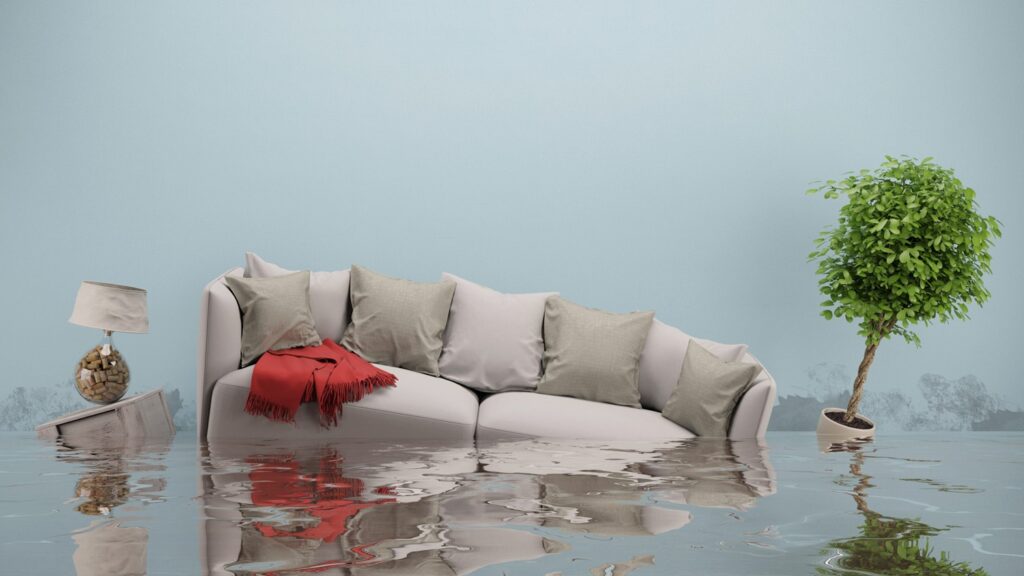Floods can be a devastating force of nature that can cause significant damage to homes and other structures. Homeowners who live in flood-prone areas face an increased risk of flooding and may require additional protection beyond their standard homeowner’s insurance policy. This is where flood insurance comes into play.
Flood insurance is a type of insurance policy that covers damage caused by floods. It is a separate policy from standard homeowner’s insurance and is offered through the National Flood Insurance Program (NFIP) or private insurance companies. Flood insurance can cover the cost of repairing or rebuilding a home, replacing personal property, and living expenses while the home is being repaired.
Flood insurance is essential for homeowners living in flood-prone areas because it provides protection against the financial impact of flood damage. Without flood insurance, homeowners may be left with significant repair costs, which can be financially devastating. Additionally, some mortgage lenders may require homeowners to purchase flood insurance if their property is located in a high-risk flood zone.
The purpose of this article is to provide homeowners with a comprehensive understanding of flood insurance. We will discuss the types of flood insurance coverage available, the cost of flood insurance, and how to determine if flood insurance is necessary. By the end of this article, readers will have the knowledge they need to make an informed decision about whether or not to purchase flood insurance.
Types of Flood Insurance

There are two main types of flood insurance available to individuals and businesses: the National Flood Insurance Program (NFIP) and private flood insurance.
- The National Flood Insurance Program (NFIP): The NFIP is a government program administered by the Federal Emergency Management Agency (FEMA). It was created to provide affordable flood insurance to property owners in high-risk flood zones where coverage may be required as a condition of obtaining a mortgage. NFIP policies cover both building and personal property losses due to flooding and have a maximum coverage limit of $250,000 for residential buildings and $500,000 for commercial buildings.
- Private Flood Insurance: Private flood insurance is offered by private insurance companies and can provide coverage in addition to, or instead of, NFIP coverage. It can be tailored to meet specific needs and can offer higher coverage limits than the NFIP. Private flood insurance can also be purchased by property owners in low-risk flood zones where flood insurance is not required, but still may be desired for added protection. However, it is important to note that private flood insurance policies may not be recognized by mortgage lenders and may require additional documentation to be considered valid.
Coverage options of for flood insurance
Building coverage provides financial protection for the physical structure of your home or business, including the foundation, walls, roof, and windows, as well as any built-in appliances, plumbing, or electrical systems. This coverage can also extend to detached garages or other structures on your property that are not used for business purposes.
Contents coverage, on the other hand, covers the cost of repairing or replacing your personal belongings that have been damaged or destroyed in a flood. This can include furniture, electronics, clothing, and other valuables.
It’s important to note that these coverage options are typically sold separately, so it’s important to carefully consider your insurance needs and select the coverage that best suits your situation. Additionally, the specific terms and conditions of your policy will depend on your location, the flood risk in your area, and other factors. Therefore, it’s essential to review your policy carefully and understand exactly what is covered in the event of a flood.
The National Flood Insurance Program
The National Flood Insurance Program (NFIP), managed by the Federal Emergency Management Agency (FEMA), offers flood insurance to homeowners in participating communities and those in the NFIP-designated floodplains. The actual insurance policies are issued by private insurance companies, not by the NFIP or FEMA.
The Federal Emergency Management Agency (FEMA) updates maps of the flood zones in the U.S., the areas that are most likely to experience flooding. FEMA updates the zones as they change along with new and intensifying weather patterns. The zones are broken up into subsections for rating purposes. Properties that are located in zones B, C, and X run a moderate to low risk for flooding. Low risk means less than a 1% chance of annual flooding.
Properties that are located in zones designated with an A are considered high risk. They are broken down further, with descriptions of potential floodwater heights and estimated rates of occurrence over the course of a 30-year-mortgage. Properties that receive a V designation are similar to the ones located in zone A. These are high-risk areas that are positioned along the coast.
Some homeowners may be in Zone D, which indicates that a determination has yet to be made for the area. Flood zone maps are under continuous review to accommodate changing weather patterns and artificial changes to the environment such as dams and levees.
You can find your flood zone by visiting Floodsmart.gov and checking a property address against the flood map service center.
Coverage Options for Flood Insurance
Flood insurance is a specialized type of insurance that provides protection against damages caused by floods. If you live in an area prone to flooding, it’s important to understand the different coverage options available to you. The two primary types of coverage offered by flood insurance are building coverage and contents coverage.
- Building coverage:
Building coverage provides protection for the physical structure of your home, including the foundation, walls, roof, windows, and electrical and plumbing systems. This coverage is typically required by mortgage lenders if you live in a high-risk flood zone. The maximum amount of building coverage you can purchase is $250,000.
- Contents coverage:
Contents coverage provides protection for your personal belongings, including furniture, appliances, clothing, and electronics. This coverage is optional but recommended, especially if you have valuable items that could be damaged or destroyed in a flood. The maximum amount of contents coverage you can purchase is $100,000.
In order to be eligible for flood insurance, your home or business must be located in a community that participates in the National Flood Insurance Program (NFIP). This program is administered by the Federal Emergency Management Agency (FEMA) and provides affordable flood insurance to property owners in participating communities. To find out if your community participates in the NFIP, you can visit the FEMA website or contact your insurance agent.
It’s important to note that there is typically a 30-day waiting period before your flood insurance coverage goes into effect. This means that you cannot purchase flood insurance at the last minute in anticipation of a flood event. If you live in a high-risk flood zone, it’s recommended that you purchase flood insurance as soon as possible to ensure that you are protected in the event of a flood.
The Cost of Flood Insurance
The NFIP regulates the pricing of flood insurance policies, and the cost will not differ between issuers. If you live in a flood zone, or an NFIP-participating community, the NFIP can help you find an insurance agent.
To determine your policy cost your agent will look at factors like the location and structure of your home, including how near it is to a body of water, and its elevation. Costs will also be affected by the type of coverage you have selected, such as replacement cost value versus actual cost value.
Factors such as the flood zone designation, age of the property, and the number of floors can all impact pricing. A Preferred Risk Policy (a lower-cost flood insurance policy) provides both building and contents coverage for properties in moderate-to-low risk areas for one price. Certain communities that have implemented flooding safeguards qualify for discounts under the NFIP, too. As a result, annual premiums can vary widely.
With NFIP policies, the maximum for residential structures is $250,000 in building coverage and $100,000 in contents coverage. The maximum for businesses is $500,000 in building coverage and $500,000 in contents coverage.
Of course, you can always seek out coverage on your own, especially if you want to insure your property for a larger amount (rates for additional coverage won’t be regulated, however). Often, starting with the company issuing your regular homeowners policy is a good idea.
Benefits of Flood Insurance for Homeowners:
Flood insurance is an important investment for homeowners, providing them with several benefits that can help protect their financial and emotional well-being. Some of the key benefits of flood insurance for homeowners include:
A. Protection from financial losses: Flood damage can be expensive to repair, and in many cases, it can result in total loss of property. Having flood insurance can provide homeowners with financial protection against these losses. In the event of a flood, the insurance policy will cover the cost of repairs, or in the worst-case scenario, the cost of rebuilding the home. This can help homeowners avoid the burden of having to pay for these expenses out of their own pockets, which can be particularly challenging if they don’t have the necessary savings or insurance coverage.
B. Peace of mind: Floods can cause significant stress and anxiety for homeowners, particularly if they live in areas prone to flooding. Having flood insurance can provide peace of mind, knowing that if a flood does occur, they will have the necessary financial protection to help them recover. This can help homeowners feel more secure and confident in their investment in their property.
C. Requirement for certain homeowners: In some cases, flood insurance may be a requirement for homeowners who live in areas that are at high risk of flooding. For example, homeowners who live in a flood zone designated by the Federal Emergency Management Agency (FEMA) may be required to purchase flood insurance as a condition of their mortgage. Even if flood insurance is not a requirement, it is still a wise investment for homeowners who live in areas prone to flooding.
In summary, flood insurance provides several important benefits for homeowners, including financial protection against flood damage, peace of mind, and in some cases, a requirement for certain homeowners. Homeowners who live in areas prone to flooding should consider purchasing flood insurance to help protect their investment in their property and provide themselves with peace of mind.
How Flood Insurance Works
Floods are one of the most common and costly natural disasters in the world. The damage caused by floods can be devastating, and repairing the damage can be expensive. One way to protect your home and your belongings from flood damage is to purchase flood insurance. Here’s what you need to know about how flood insurance works.
A. How to purchase flood insurance
Flood insurance can be purchased through the National Flood Insurance Program (NFIP) or through private insurance companies. If you live in a high-risk flood zone, your mortgage lender may require you to purchase flood insurance. If you live in a moderate-to-low risk area, you may still be eligible to purchase flood insurance at a lower cost.
To purchase flood insurance, you’ll need to provide information about your property, including its location and the value of your home and belongings. You may also need to provide an elevation certificate to determine your property’s flood risk.
B. Determining the flood risk for your home
The amount you pay for flood insurance will depend on your property’s flood risk. Flood risk is determined by a variety of factors, including the property’s location, the elevation of the property, and the history of flooding in the area. Properties in high-risk flood zones are more likely to experience flood damage and will generally have higher insurance premiums.
C. The claims process
If your home is damaged by a flood, you’ll need to file a claim with your flood insurance provider. You should contact your insurance provider as soon as possible after the flood to begin the claims process. The claims process will involve documenting the damage to your property and providing receipts and estimates for repairs.
D. Common misconceptions about flood insurance
There are several common misconceptions about flood insurance. One is that homeowners insurance covers flood damage. In most cases, homeowners insurance does not cover flood damage and a separate flood insurance policy is needed. Another misconception is that only homes in high-risk flood zones need flood insurance. However, floods can happen anywhere, and even homes in moderate-to-low risk zones can be damaged by floods.
Frequently asked questions

When Is Flood Insurance Required?
Flood insurance is not required by federal law, however a mortgage provider may require it depending on where the property is located.
What is the National Flood Insurance Program (NFIP)?
The National Flood Insurance Program (NFIP), managed by the Federal Emergency Management Agency, is federally backed flood insurance available to participating communities as an alternative to disaster assistance. The policies are issued by private insurers.
Is Flood Damage Covered by Home Insurance Policies?
Flood damage is not typically covered by standard home insurance companies. Flood insurance is a separate policy that covered damage to the property and contents.
Conclusion:
In conclusion, flood insurance is an essential investment for homeowners, especially those residing in flood-prone areas. In this article, we’ve discussed how flood insurance can help protect your property and finances in the event of a flood, as well as some of the key factors to consider when purchasing a policy.
As we’ve seen, flood damage can be financially devastating, and unfortunately, standard homeowners insurance policies don’t typically cover flood damage. By purchasing flood insurance, however, you can ensure that you’re protected in the event of a flood and won’t be left with the full cost of repairs and replacements.
In closing, we urge all homeowners to seriously consider purchasing flood insurance, even if they don’t live in areas traditionally considered flood zones. Flooding can happen anywhere and at any time, and having insurance in place can provide invaluable peace of mind. Don’t wait until it’s too late – take action now and protect your home and your finances from the unpredictable forces of nature.


